Last week on Tuesday, Oct. 16, the United States Mint unveiled candidate designs for the 2022 Native American $1 Coin.

The U.S. Mint program of Native American dollar started in 2009. The series highlights annually changing reverses with designs commemorating the important contributions made by Indian tribes and individual Native Americans to the history and development of the United States.
Seventeen proposed designs were introduced for the 2022 dollar. The year’s coin celebrates Ely Samuel Parker who was a trained lawyer, self-taught engineer, and Seneca tribal diplomat.
Parker served as adjutant to Lt. General Ulysses S. Grant during the American Civil War. He helped draft the surrender documents signed by General Robert E. Lee at Appomattox in April 1865. Four years later, then President Grant appointed Parker as the Commissioner of Indian Affairs. He was the first Native American to hold the office, serving in the position from 1869 to 1871.
U.S. Mint descriptions and images of the candidate designs follow:
Candidate Design Images and Descriptions
All of the following candidate designs feature a depiction of Ely Parker, inscriptions of his English name or a representation of his signature, and the Indian name given to him at birth, "HA-SA-NO-AN-DA." The designs also carry the required inscriptions "United States of America" and "$1."
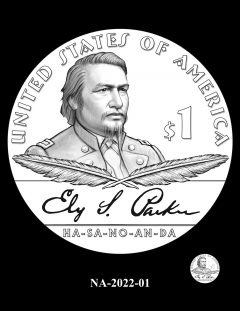 |
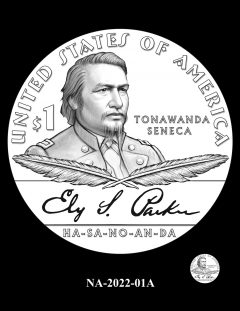 |
NA-2022-01 and NA-2022-01A feature Parker with two quill pens, symbolic of his life and work in two worlds — as a Seneca and a resident of the United States. Design NA-2022-01A includes the additional inscription, "Tonawanda Seneca," Parker’s tribe.
NA-2022-02 through NA-2022-06 depict Parker with a quill pen and book, symbolic of his mastery of English and his graceful penmanship. In NA-2022-03, the two pillars represent Parker’s life in two worlds, running parallel to one another. The columns also give the effect of a doorframe; and, with his raised hand pointing to the west, references the title "Donehogawa," meaning "Keeper of the Western Door of the Iroquois Longhouse."
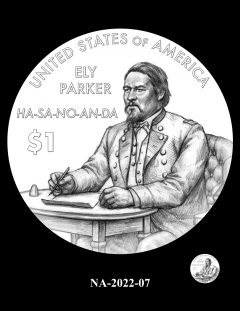 |
NA-2022-07 depicts Parker seated at a table with pen in hand and a document in front of him.
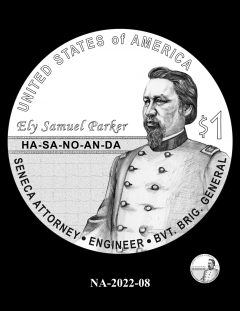 |
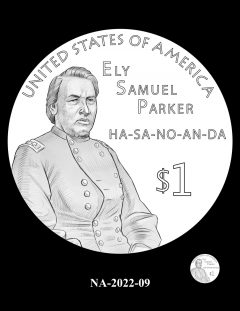 |
NA-2022-08 and NA-2022-09 focus on Parker, while in NA-2022-08 the wall behind him provides a backdrop to highlight his varied career (and described in the additional inscriptions). In addition to serving as a Seneca attorney, Parker worked for the U.S. as a civil engineer, during which time he met Ulysses S. Grant. At the end of the Civil War, Parker was granted the title of Brevet Brigadier General, an honorary promotion from his rank of Lieutenant Colonel.
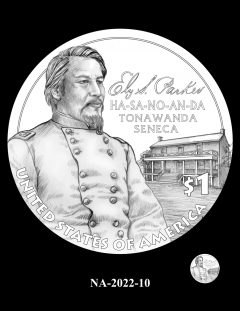 |
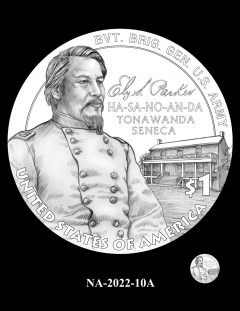 |
NA-2022-10 and NA-2022-10A feature the McLean House in Appomattox, Virginia, the building where the Articles of Surrender were signed on April 9, 1865, ending the U.S. Civil War. Both designs include the inscription "Tonawanda Seneca," while NA-2022-10A adds reference to his honorary rank of Brevet Brigadier General in the U.S. Army.
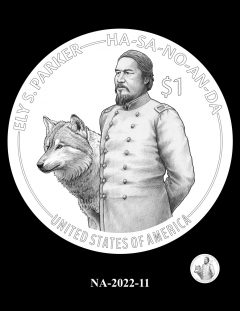 |
NA-2022-11 features Parker with a wolf, representative of his clan in the Tonawanda Seneca Nation.
NA-2022-12 through NA-2022-14A depict Parker with a book at hand, symbolic of his education and mastery of English. In NA-2022-13 and NA-2022-14, a broken rainbow symbolizes a dream Parker’s mother had before he was born. The broken rainbow she saw stretching across the landscape was interpreted as a vision of her future son’s life in two worlds. NA-2022-13, NA-2022-14, and NA-2022-14A include the additional inscription "Tonawanda Seneca."
Background
Ely Samuel Parker (1828-1895), born as Ha-sa-no-an-da of the Tonawanda Seneca Nation, mastered English as a youth, and served as a translator and scribe for tribal chiefs in their struggle to maintain their reservations. In appreciation, the Iroquois bestowed upon Parker their greatest honor, naming him Grand Sachem of the Six Nations and according him the sacred name of Donehogawa (Keeper of the Western Door of the Iroquois Longhouse).
In 1853, at age 25, the governor of New York formally recognized Parker as the chief representative of the Iroquois confederacy, and the state government treated him as the head chief in any dealings with the confederacy. Parker studied law but was not allowed to take the bar exam because he was not a United States citizen at that time. Instead, Parker trained as a civil engineer, and while on assignment in Galena, Illinois, met a store clerk named Ulysses S. Grant and started a fateful friendship.
Parker later served as General Ulysses S. Grant’s military secretary during the Civil War. In that capacity, Parker drafted the Articles of Surrender when Robert E. Lee met with Grant at Appomattox, Virginia, on the morning of April 9, 1865. Lee, recognizing Parker as an American Indian, extended his hand with the comment, "I am glad to see one real American here." Parker accepted Lee’s hand, responding, "We are all Americans."

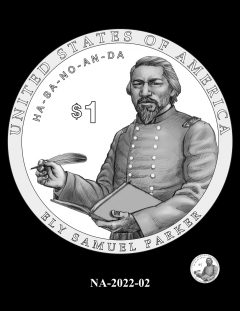
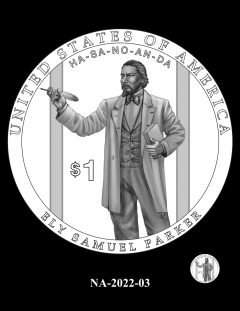
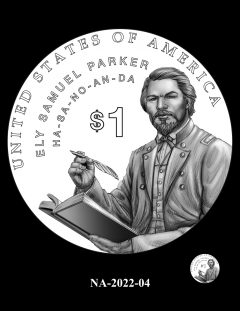
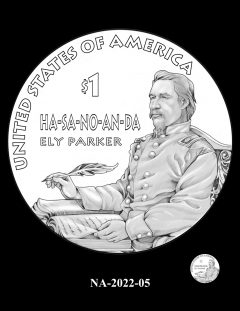
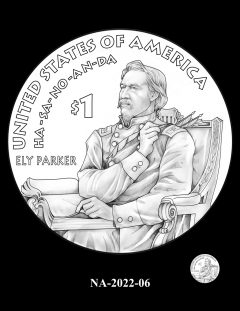
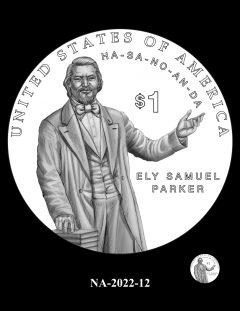
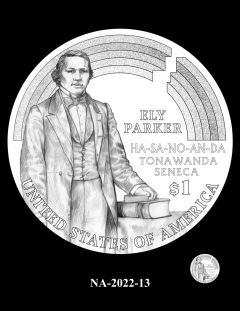
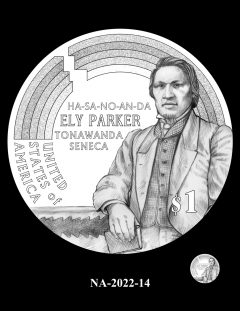
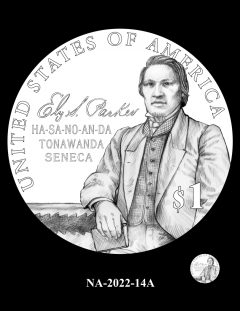





Good choice. I love his statement to Lee, punchline of the Civil War.
Yes we are ALL Americans,. Thank you for the Honorable coin made to Honor a Great Man in American History